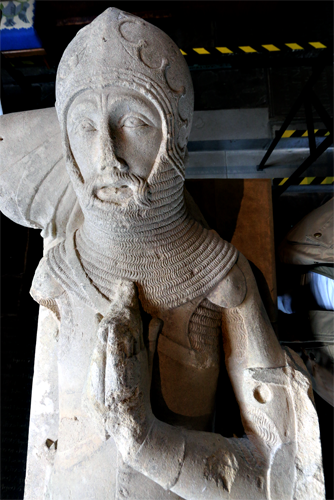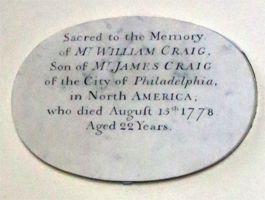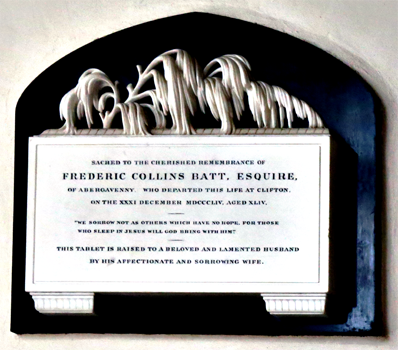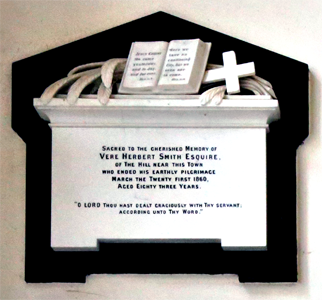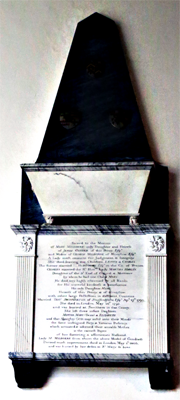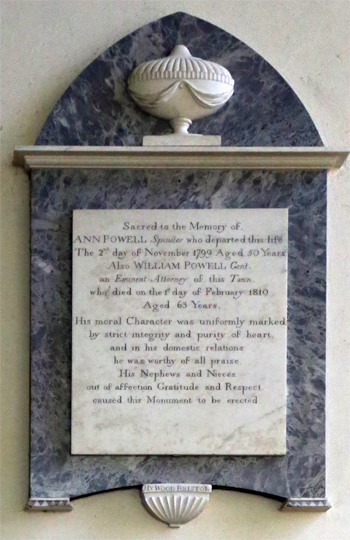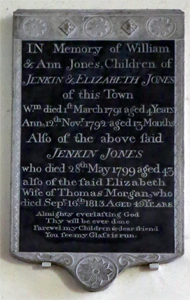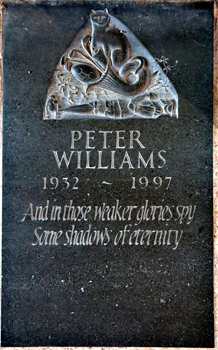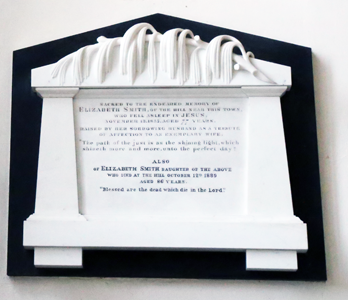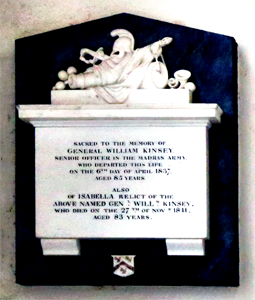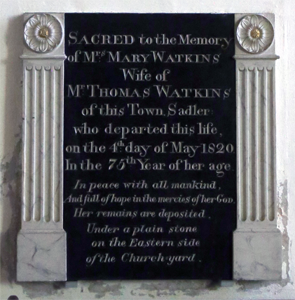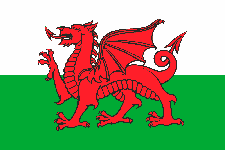 |
WALES |
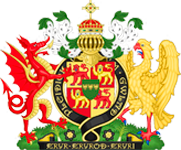 |
 |
MONMOUTHSHIRE |
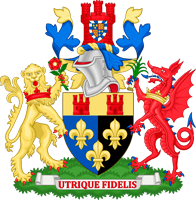 |
| The 'new' county of Monmouthshire. |
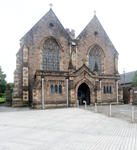 |
Abergavenny - St Mary's Priory Church |
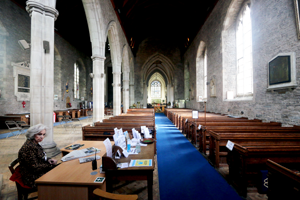 |
| There are several
modestly priced car parks in the town. The church is open; there
is no charge and photography is allowed at no charge. There is a
small welcome desk cum shop Curiously the incumbent is given the titles of Prior and Vicar of Abergavenny O/S Ref: 301 141 |
| NORTH TRANSEPT |
| Sir John de Hastings (1326) |
 |
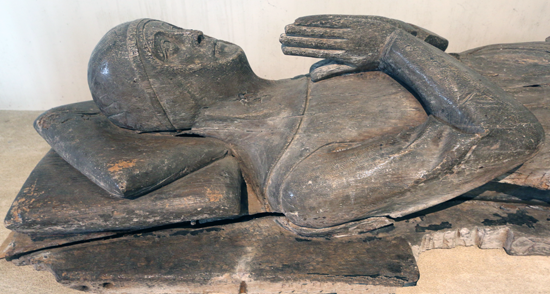 |
 |
 |
| Effigy of oak on a stone tomb chest. The
most recent identification of this monument is that it is of
Sir John de Hastings, 2nd Lord Hastings (c. 1325), who contributed most to the
rebuilding of the priory in the fourteenth century. There are
traces of coloured and gilt gesso on the effigy; this would have
originally covered the effigy and been stamped with mail and
other details. The modern tomb chest (which looks far too long for the effigy) contains eight panels with individualized knight under arches from the original tomb; there are also traces of colour here. It is said that there were originally fourteen figures. Dr Claude Blair writes that the monument originally had a canopy and stood in the north chancel chapel. |
| NORTH CHAPEL St Joseph's or Lewis Chapel |
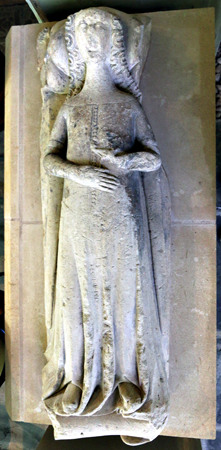 |
A Hastings Lady & Eva de Braose |
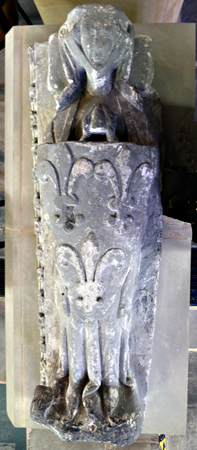 |
 |
||
 |
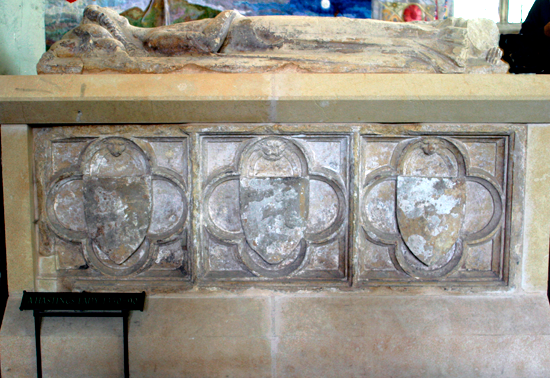 |
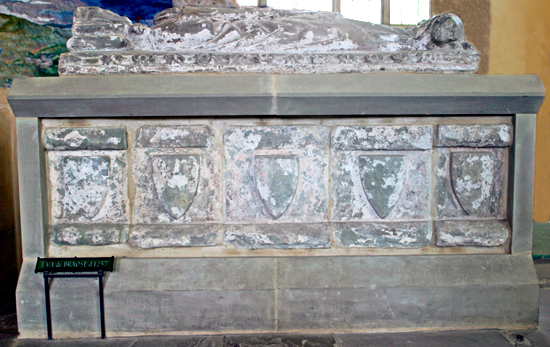 |
Above left and centre top: A Hastings Lady. A mid 14th century limestone effigy. Note the long crimped hair and the position of her hands which appear to have held some object. A chain hanging from one hand and disappearing into a pocket suggests it might have been a pet animal (a squirrel was suggested by Archdeacon Coxe in 1800). It is said in the notes to be Margaret Plantagenet, who married John de Hastings, son of Sir Lawrence de Hastings; if this information is correct, and there is no evidence that it is, then she was the youngest daughter of King Edward III. John de Hastings was buried in Hereford. (q.v. above under Sir Lawrence de Hastings) and Margaret of Windsor was buried at Abingdon Abbey, Oxfordshire. She had been a pawn in her father's diplomatic maneuvering. Could this, however, be her hear burial. Above right and centre bottom. Eva de Braose (1257) She married into the Marcher Canteloupe family and is said to have buried with her husband in Litchfield Cathedral, according to the notes; I have not discovered any remaining monument to them in the cathedral that. The effigy is of sandstone and she holds a casket which probably indicates a heart burial, which would certainly give some weight to this tale. Her feet rest on a hound. Unusually she is covered with a large shield bearing arms. Traces of polychrome are present. Both of the above effigies now lie on modern tomb chests on one side of which are set panels with shields which probably came from the original monument. |
|
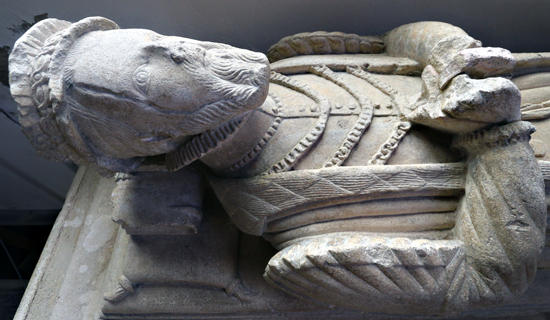  -1 Following the Welsh tradition David Lewis too his father's Christian name as his surname. -2 'An absence which no doubt helped his distinguished administrative career in Elizabeth's reign.' Diarmaid MacCulloch, Thomas Cramner (pp 573-4) Yale University Press 1996. |
Dr David Lewis (1584) |
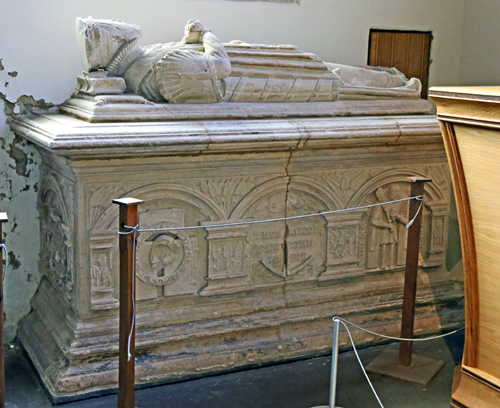 |
|
Dr David Lewis (1584) was native of Abergavenny, who was the first principal of Jesus College, Oxford. His father, Lewis ap John-1 , became the first (Protestant) vicar of Abergavenny, following the Dissolution of the Monasteries under King Henry VIII. He was appointed to the tribunal that was to try Thomas Cranmer, the first Protestant Archbishop of Canterbury, in the reign of Queen Mary I; however, he did not attend -2. He became a judge of the High Court of the Admiralty in the reign of Elizabeth I. Note the pillow and books under his head and the academic looking figure in low relief under the far left tomb chest arch The sculptor was John Gildon of Herefordshire (signed); erected by 1587. |
| HERBERT CHAPEL Now The Saint Benedict Chapel |
Sir Lawrence de Hastings, 2nd Earl of Pembroke, 13th Lord of Abergavenny (1348) |

|
||
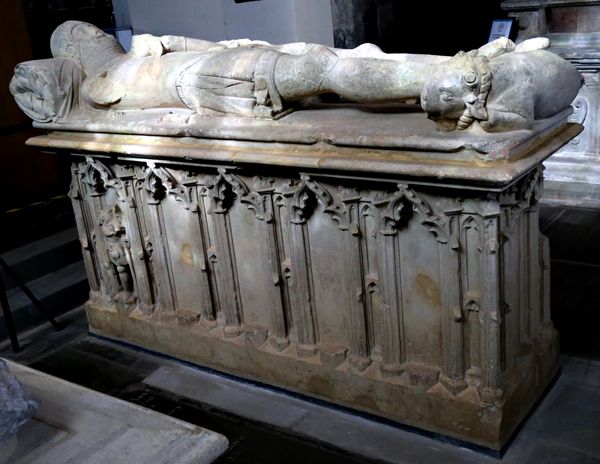 |
|
Sir William de Hastings (1348) |
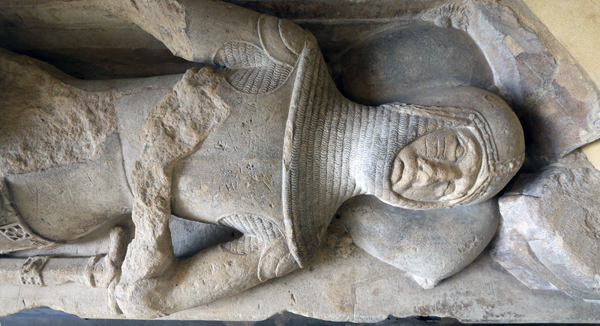 a a |
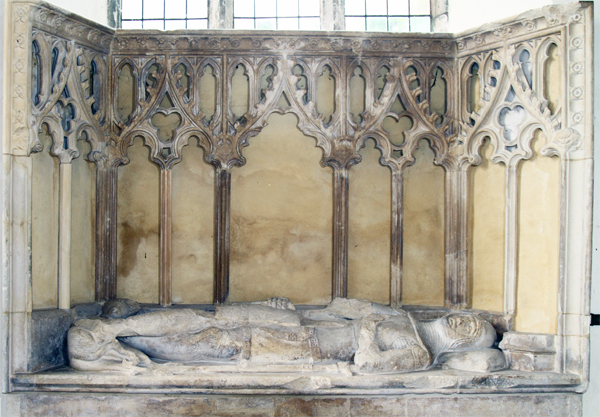 |
|
Sir William de Hastings (1348) was the brother of Sir Lawrence de Hastings (q.v. below); both died of bubonic plague during the Black Death. The effigy is of Painswick marble but unlike that of his brother (Sir Lawrence) his legs are crossed. He turns slightly towards the observer; this is not a common attitude but does occur from time to time. His left hand lies on his chest while his right grasps a dagger. . His feet rest on a greyhound, again uncommon, and his head on a tasseled pillow. Note the fine tracery of the enclosure surrounding the effigy. The tomb chest itself is quite plain. |
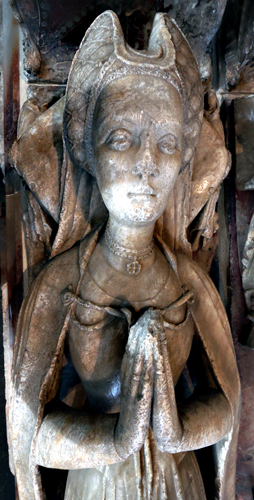 |
Sir William ap Thomas (Herbert) (1446) & Gwladys (1454) |
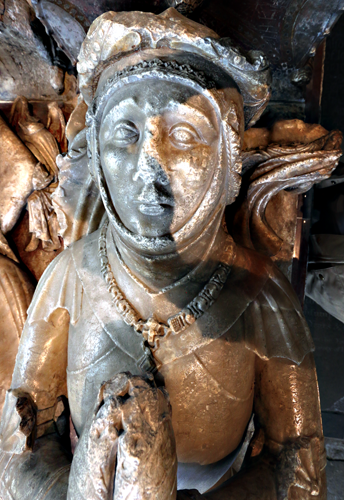 |
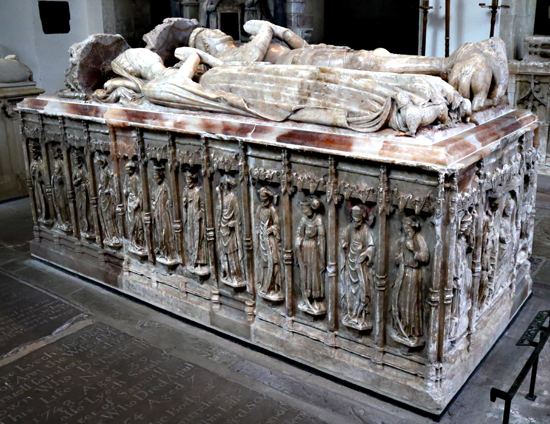 |
 |
 |
|
Sir William, was a successful Welsh squire took the name of surname of Herbert; he was to become the founder of several dynasties. He married Glawys who was the widow of Sir Richard Vaughan, who had fought at Agincourt. She was known as the 'Star of Gaveuny'. He was the father of Sir Richard Herbert of Coldbrook. All alabaster. On each side of the tomb chest are twelve robed figure, each holding scrolls; the head (west) end is now blank but the foot (east) end is a representation of the Annunciations. Note the gablettes above the heads of the effigies. |
|
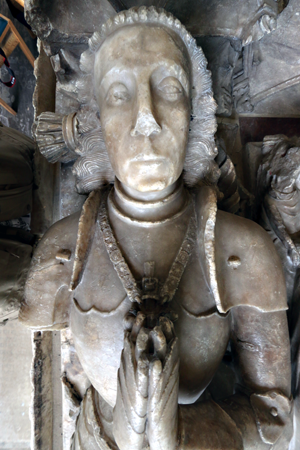 |
Sir Richard Herbert of Coldbrook (1469) & Margaret (Gruffudd) |
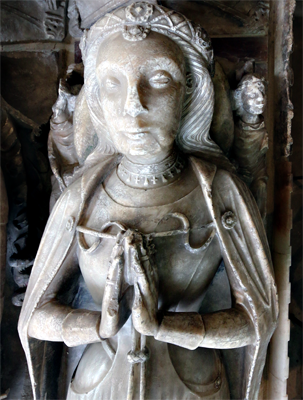 |
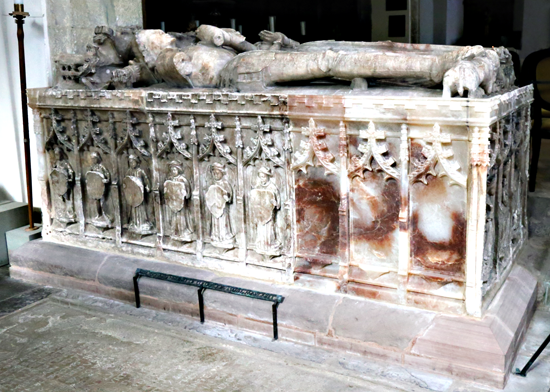 |
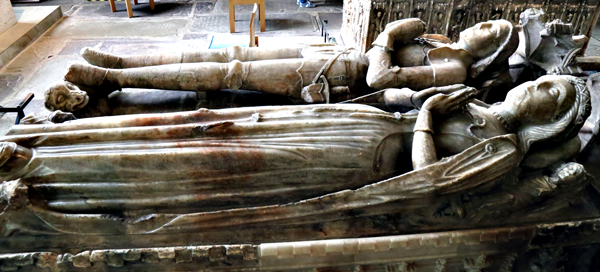 |
 |
Sir Richard Herbert (1469) was the second son of Sir William Herbert and younger brother of Sir William Herbert, 1st Earl of Pembroke. All alabaster. The effigies lie on a tomb chest with mutilated gablettes above their heds. His head is bare and her long; her hair is free. There were nine arches with angels holding shields on the tomb chest, but six remain. At the east end is a carving of the Virgin and Child with saints Catherine and Margaret . |
| Sir Richard
Herbert was the second son of Sir William Herbert
(above). Both
he and he elder brother, Sir William Herbert, Earl of Pembroke
were Yorkists during the Wars of the Roses and supporters of
King Edward IV. Richard Neville, Earl of Warwick, had helped
Edward gain the throne. However, Edward had secretly married
Elizabeth Woodville and began to promote members of her family
to positions of influence, sidelining Warwick. Edward also blocked
a marriage between his brother, George Duke of Clarence, and
Isabel, one of of Warwick's two daughters. In 1469 a revolt broke out in the north of England led by 'Robin of Redesdale', whose identity has never been discovered. Warwick's brother, John Neville, who was now Earl of Northumberland, did not take action to suppress it, as would normally have been the case. Warwick and Clarence began to assemble troops, allegedly to suppress this revolt. They also travelled to Calais where another Neville brother, George, now Archbishop of York married Clarence and Isabel Neville. They issued a proclamation condemning abuses by the Woodvilles (Edward's in-laws), the Earl of Pembroke and others. They then crossed to London and marched north to link up with the rebels. A Yorkist army, under sir William Herbert, Earl of Pembroke set out to intercept the rebels but were defeated in Battle of Edgecote. After the battle the Earl and his brother Sir Richard Herbert were beheaded. Warwick captured King Edward and held him prisoner in Middleham Castle in North Yorkshire; he also executed two of Edward's in-laws. However Warwick soon discovered there was little support for him so Edward was released and Warwick and Clarence fled abroad. But he would be back! |
| Sir Richard Herbert of Ewyas (1510) |
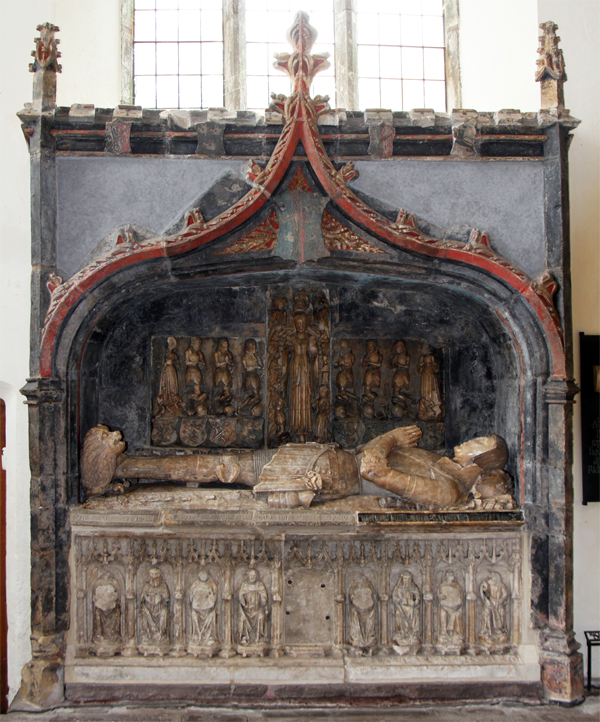 |
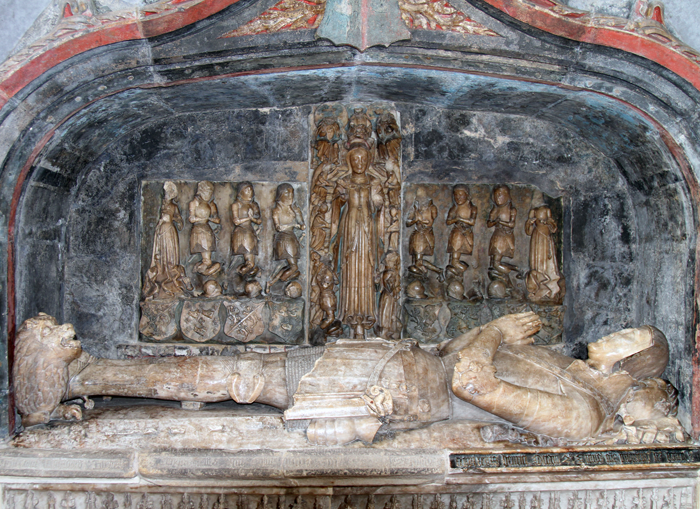  |
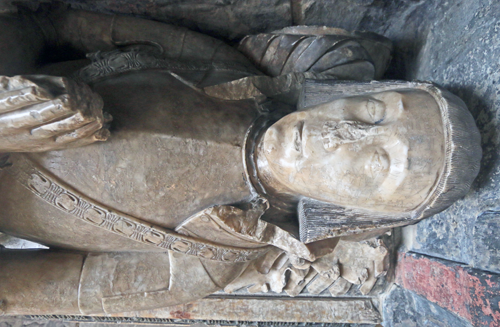 |
 |
| Sir Richard Herbert of Ewyas was the illegitimate son of Sir William Herbert KG, First Earl of Pembroke. There is no actual record of his being knighted or having a claim to Ewas; rather his descendants added these on the renewed stone inscription in an attempt to give the family respectability. He and his brother, Walter, were supporters of Henry VII. His eldest son, Walter, married Anne Parr, the sister of Katherine, the sixth and last wife of King Henry VIII. | |
The tomb chest and effigy are of alabaster and lie under an limestone arch which has much faded, remaining colour and is pitted with dowel holes where stars were once fitted. There are eight seated figures under arches in the tomb chest, four being angels holding shields. In the centre between the two groups of four figures may be seen the fixing holes of now lost armorial panel. Against the back wall is an alabaster panel of the Coronation of the Virgin flanked by smaller kneeling figures of Sir Richard and his wife on either side. This panel is flanked by their children: four sons and two daughters with shields bearing their arms below; note that the sons all kneel while the daughters stand. During the restoration of the monument a small 'Bedesman' - a figure monk telling the rosary beads - hidden below the effigy's feet; this is still hidden there as was clearly the original intention. |
|
| Judge Andrew Powell (1631) & Margaret (Herbert) |
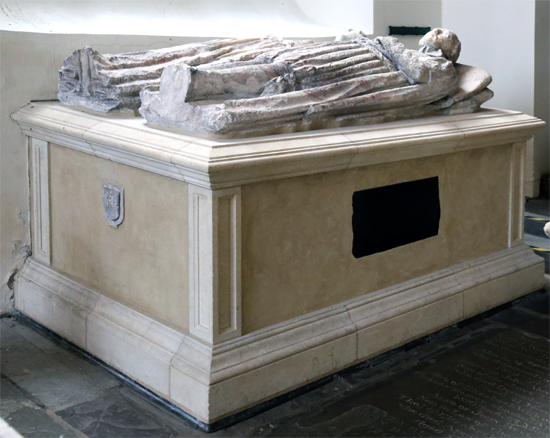 |
 |
|
Judge Andrew Powell (1631) was a judge on the Breton circuit from 1615 until his death. His wife was the daughter of Mathew Herbert of Colebrook, hence her burial in the Herbert Chapel. The effigies - particularly that of Margaret - are in very poor condition. Attached to the foot side of the modern tomb chest is an original shield while attached to the left side is a plaque, also original, with a Latin text, which when translated reads: 'Lately I was a judge. Now, waiting before a tribunal of a Judge, I am in fear. It is now that I am being judged.' The effigies are of alabaster and look like they have spent a considerable time out in the rain |
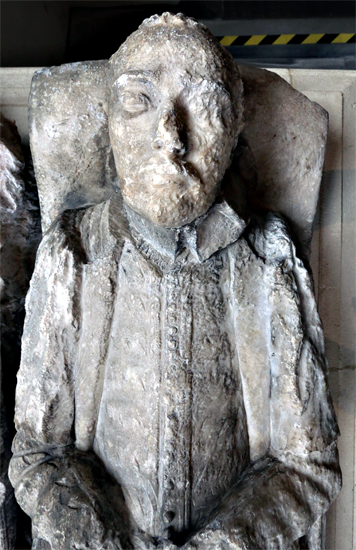 |
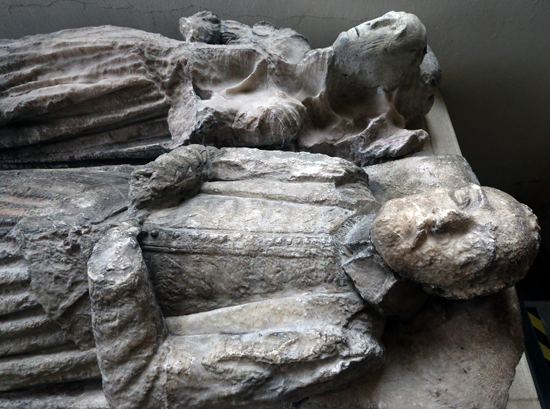 |
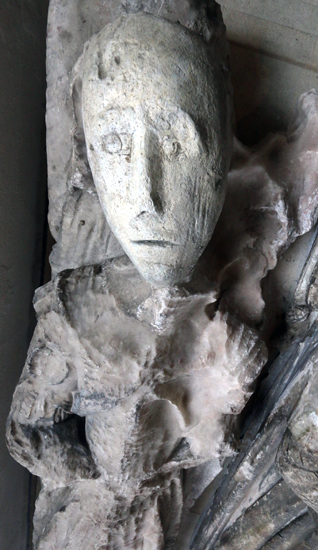 |
| William Baker (1648) & Joan |
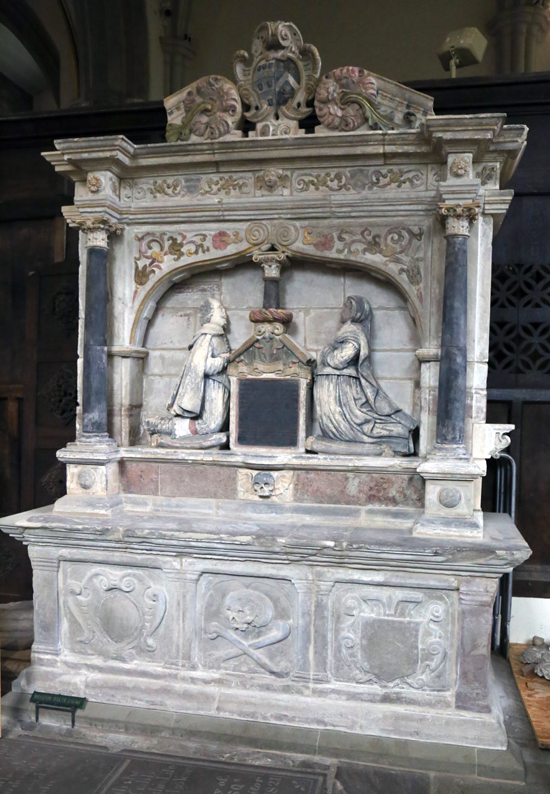 |
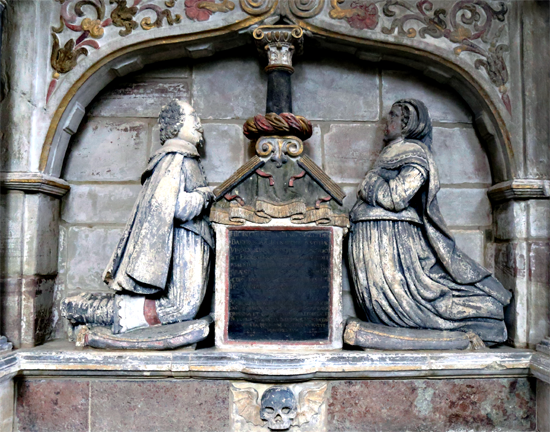 |
|
| The monuments was not erected until 1660. The inscription suggests that his widow could remember the age at which he died but not the year. I am unable to read it so I cannot verify this atatement. The monument is of limestone with a good amount of the original colour |
| Other Monuments | ||||
| William Powell BD (1863) 60 years Vicar of Abergavenny and 53 Rector of Llangattock, Nigh Usk. Magistrate and Deputy Lieutenant. His wife, Olive Mary (Powell) (1858), whose father was a banker | Gothick tablet with arms. | William Steel (1861) Surgeon. | Gothick tablet with cross | |
| William John Reginald Marsh (1905) Capt. 1st Batt. Imperial Yeomanry | Brass on black marble backing | Charles Herbert George Martin MA FZA (1915) Lt. Monmouthshire Reg. KIA near Ypres ages 33 | Wall brass | |
| John Hughes (1775) his daughter, Susanna (1775) and his wife Susannah (1781) | White oval tablet, long axis horizonal on corbel | |||
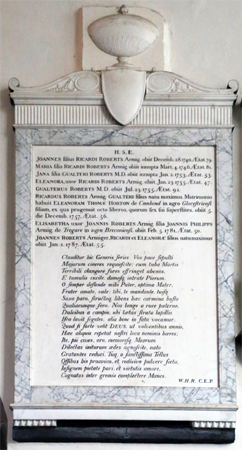 |
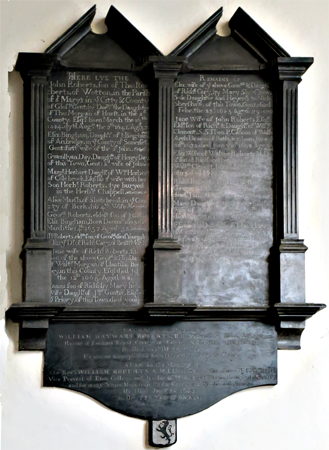 |
|
||||||
| Far left: Latin inscription. The Roberts family followed by a long Latin verse. Signed: W.H.R. C.E.P. The generations are slightly difficult to dicepher but this is probably correct. Walter MD (1663-1755) probably had two siblings, John (1661-1740) and Mary (1665-1746), who are described as children of Richard Esq, who probably was of an earlier generation. Richard Esq (1701-1757) was the son of Walter MD, who married Eleanor (Phillips) (1708-1755) and they had one son, John Esq (1734-1787) Walter MD also had a daughter, Jane (1697-1753) | ||||||||
| Left: English inscription. HERE LYE THE REMAINS OF. The Roberts Family. John (1641) who had four wives: Elizabeth (Bingham), Gwenllyan (Day), Margaret (Herbert) (who was buried with her son, Herbert Roberts), Alice (Marsh). George (1657), eldest son of John and Elizabeth. John (died young), eldest son of George and Elizabeth (Cary). Jane (Morgan) (1665 ), wife of Richard, eldest son of George. James (died young), son of Richard by Mary (Gunter). Elizabeth (Cary) (1685) wife of George. Jane (Clement) (1685), wife of George. Elizabeth (Clement) ) wife of Walter MD. Richard son of George and Elizabeth. Mary (Gunter) (1723) wife of Richard. Elizabeth (Horton) mother of Jane. Added on the apron below: William Harwatd Roberts DD (1791) and his son, Rev William Roberts AM (1833) |
 |
 |
|
||||||||||
|
Far left top: Here lies beneath this stony ſhade, Nature's
darling whom ſhe made. ELIZABETH wife of Wm Jenkins Died
29th Dec' r 1760 in the 38th year of her Age. John their Son
Died th Juky 1764 in the 5th year of his Age. How lov'd how
Valu'd once avails thee not To whom related or by whom begot A heap of Duſt remaine'th now of thee GOD only knows what WE are to be Far Left centre: Framed brass with English inscription. I can only make out William Jones Far Left bottom: Slate with Latin inscription. Partly fractured at sides. Possibley: Richard Baker 1551 Left top: Worn smooth Left centre: IN MEMORY of Frances the wife of HENRY WILLIAMS Who died 13th May 1769 Aged 51. Keep Faith and true repentance still And then let Death come when it will Left bottom. To a solicitor of Abergavenny, details I could not make out |
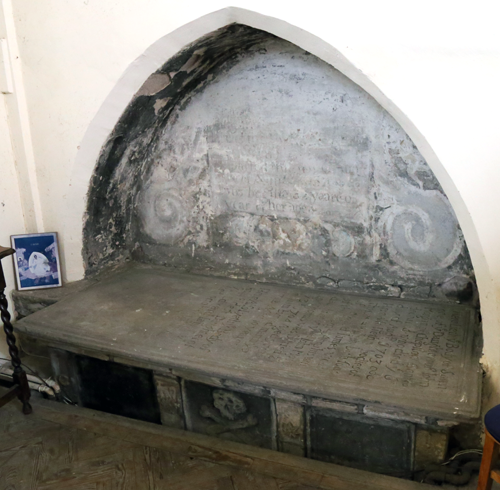 |
|
|||||||||
|
Left:
Here Lieth ye
Body of Sarah one of ye
Daughters of Iohn Morgan of Chepſow Gent deceased who died ye 6th day of
Aug 1703 Here Alſo lieth ye bodies of Thomas & William both ſons of [Davi]d Iames vic[ar] of this town & Anna his wi[fe] daughter of ye [said] Iohn Morgan Thomas was bvried __ 13th 1704 Aged 9 months William bvried march 1712 Aged 10 years Here Alſo Lyeth ye Body of [A]nna Eldest Daughter of Edward Iames who died Octob ____ That is the inscription on the flat stone; I can make very little out of the inscription on the back wall of the arch but it ends in: 'year of her age'. |
||||||||||
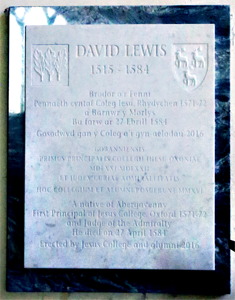 |
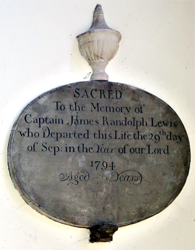 |
|
| Wall monument to Dr David Lewis (1551-1581) See above for contemporary monument. Erected 2016. In Welsh, Latin and English | Cpt James Randolph Lewis (1794) |
| A Personal Note |
Abergavenny Priory is a fine church with a magnificent collection of monuments, the best in the country. However, the only way to do them full justice is to visit the church itself: it is free to enter and the nearby car parks, although not free, are not at all expensive. The church sells a well illustrated guide book of about twenty five pages, providing information about the church itself and its monuments. As many people must visit the church especially to see these monuments, I regret to say that the guide books fails in this latter aspect. There is a good plan of the church at the beginning of the text but, although this is well drawn showing construction dates and naming the several parts of the whole building, the monuments are not named on this plan; a few are shown in outline but even these are not named. A plan with all the monuments named would be a helpful addition to this guide. There are many photographs of the several monuments but in four of these - which include several monuments - the monuments are not even named. You can deduce which they are by a bit of detective work by reading the text and examining the other photographs but this is a visitors' guide book and that should not have be needed. Information about the monuments and whom the represent is provided on plaques on the monuments themselves and in the guide book. Sometimes the two sources conflict with each other and too much of the information in anyway incorrect. I have tried to correct this where I have been able. The guide unfortunately shows the frequent - and misinformed - bias against the Parliamentary armies during the War of the Three Kingdoms. (The 'Civil War') Of course there was damage to churches and their monuments during this period but by far the greatest damage occurred during the Reformation and, especially, during the Dissolution of the Monasteries. Whole monastic churches were demolished and the monuments they contained smashed and used as building materials. Graves were opened and the bones they contained scattered for the sake of access to the lead coffins they contained. There was no respect for whom these monuments commemorated: King Alfred and his family, King Stephen, King Henry I, and King Richard III all had their graves desecrated and their monuments destroyed. The guide also refers - again showing lack of knowledge - to 'Cromwell's Army': it was not Cromwell's army, rather it was Parliament's army and the commander-in-chief was Sir Thomas Fairfax, not Oliver Cromwell. I am surprised that the Church Monuments Society give a prize to this particular guide as the best general church guide to monuments. |
